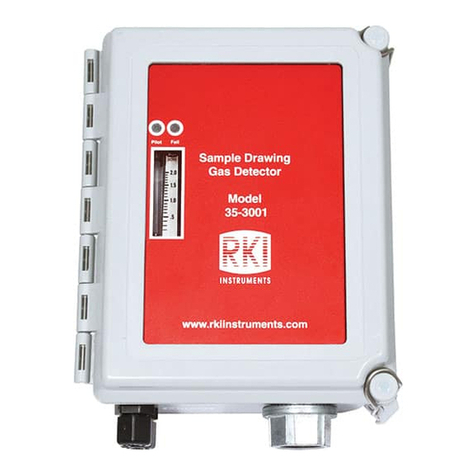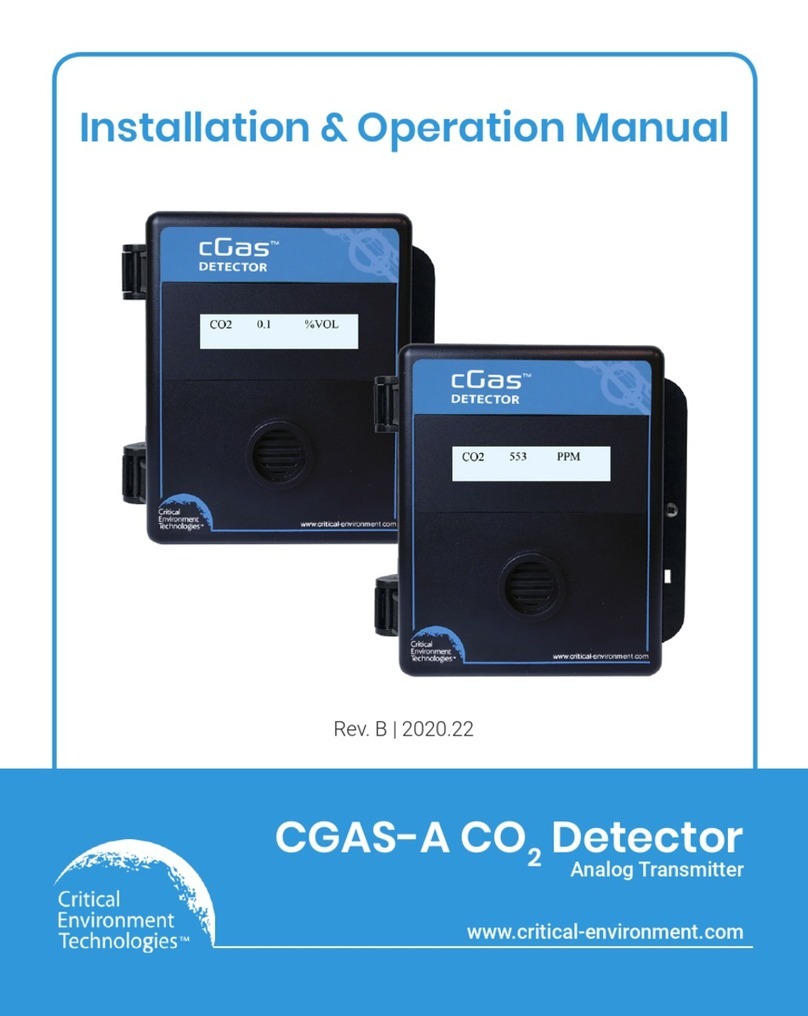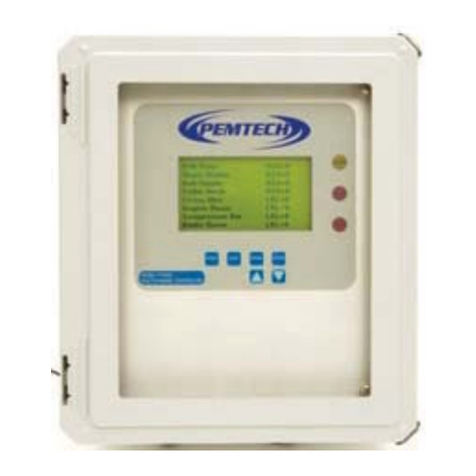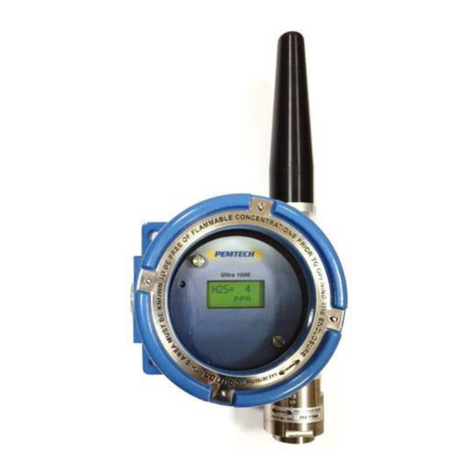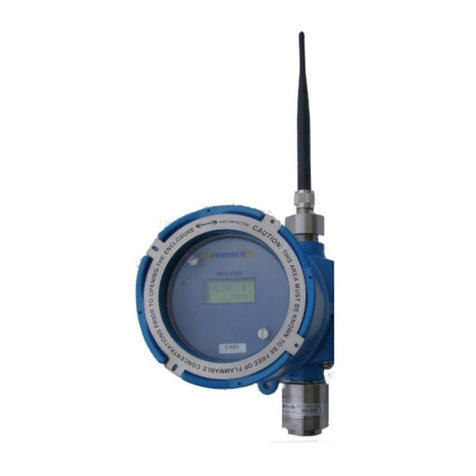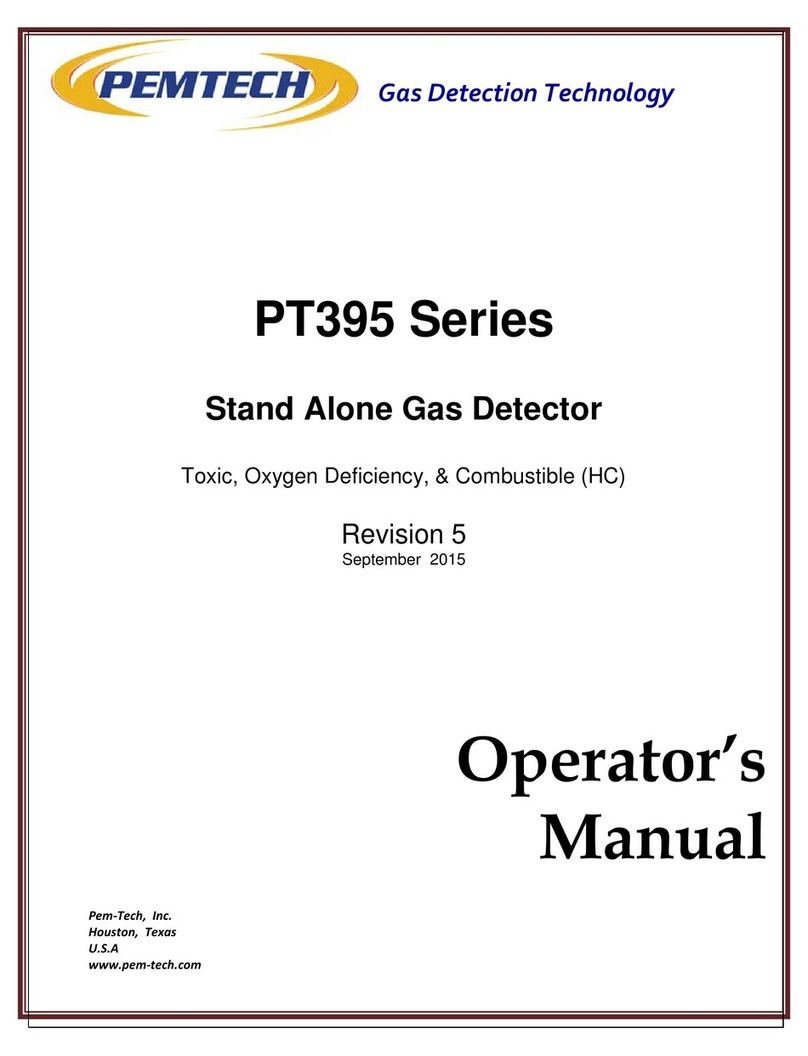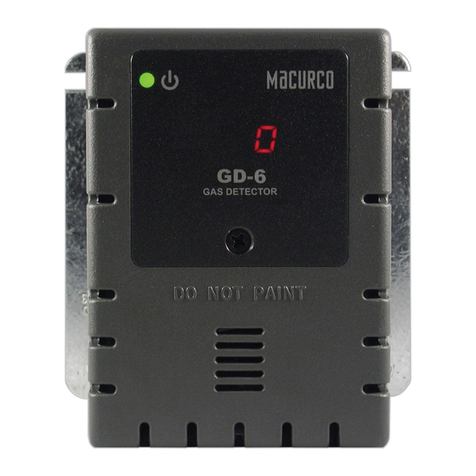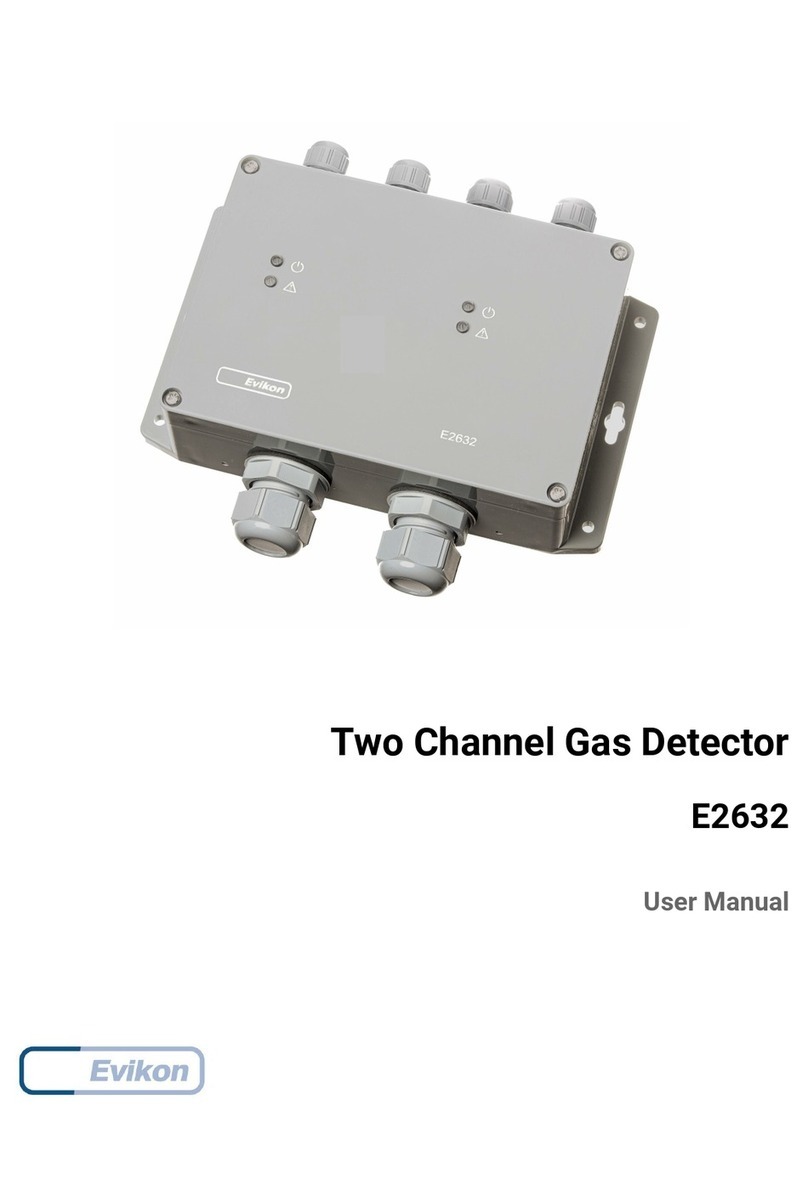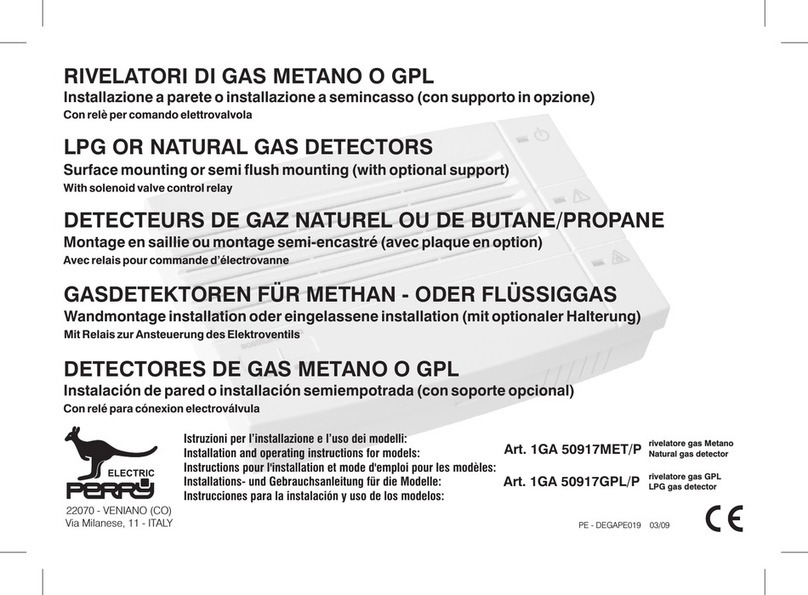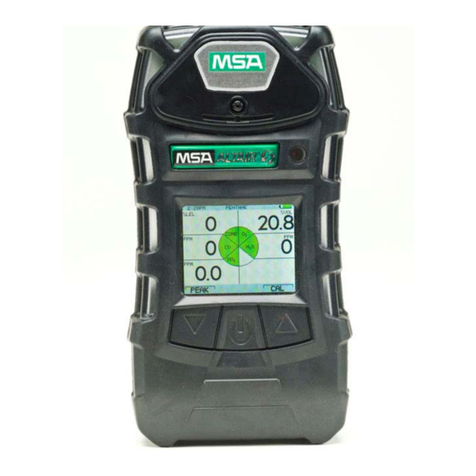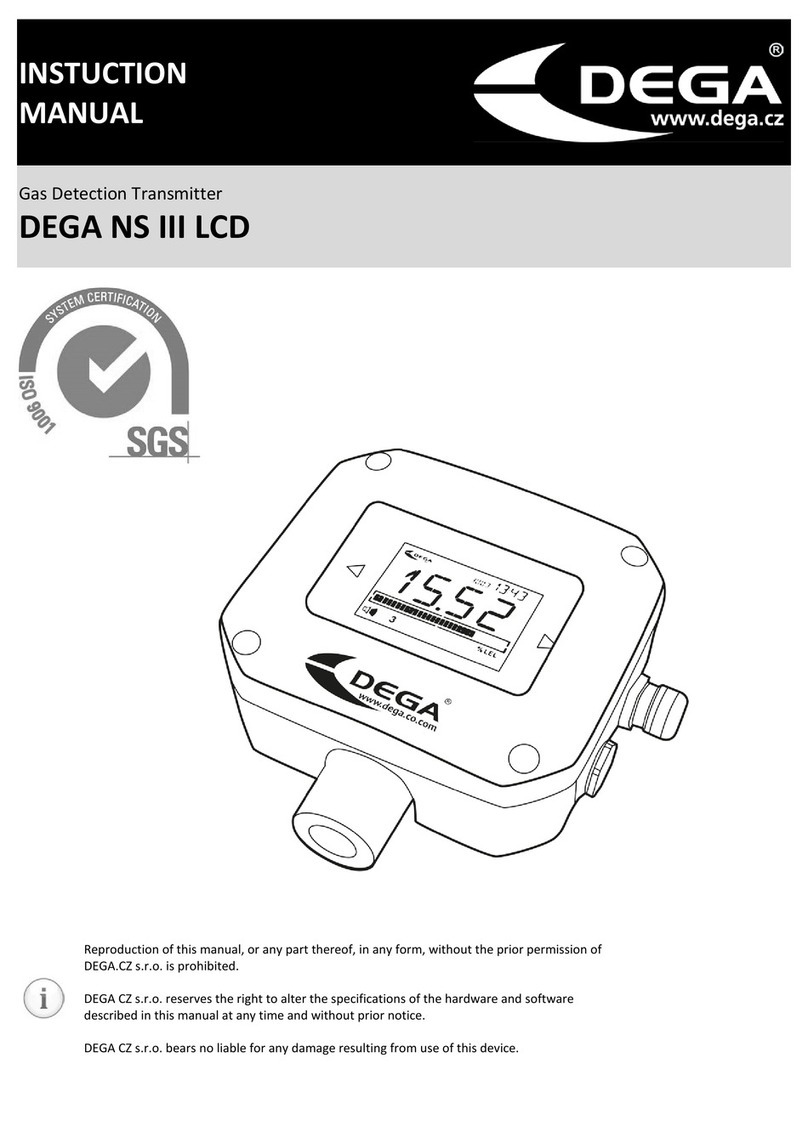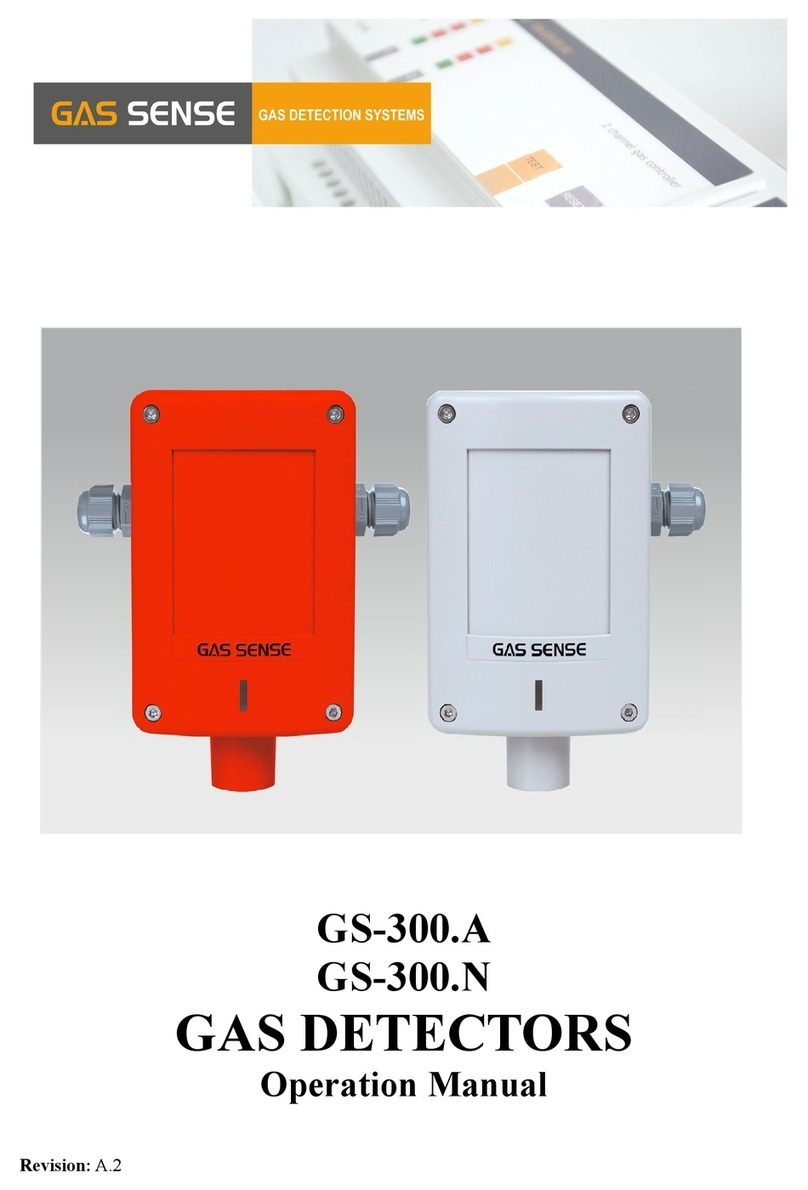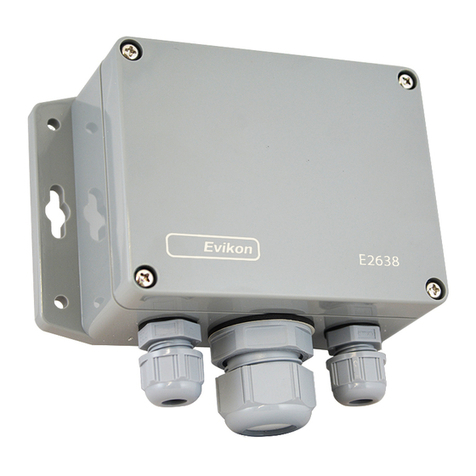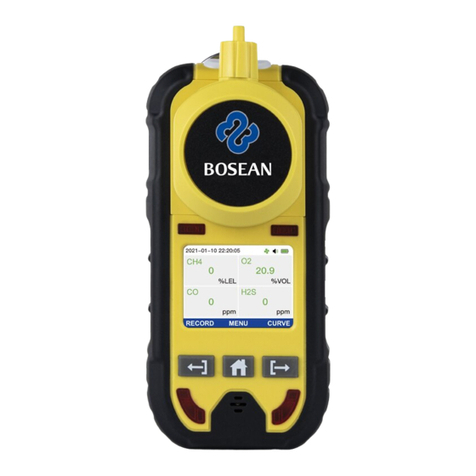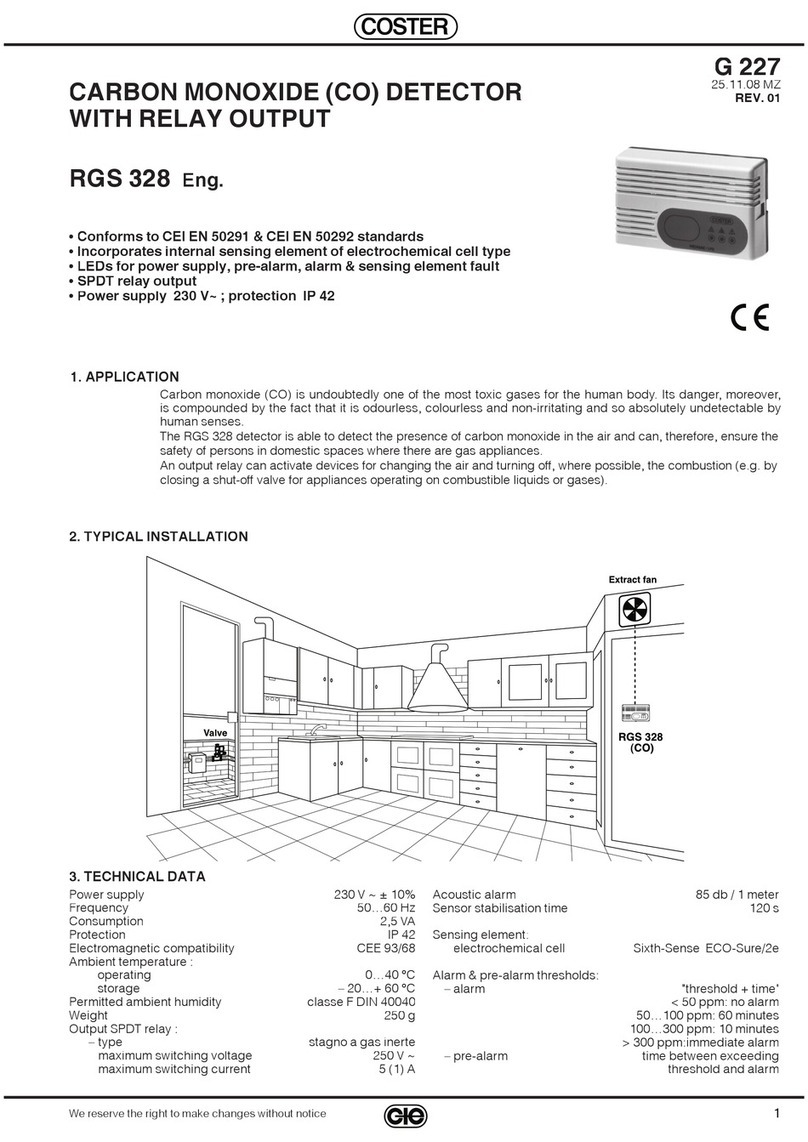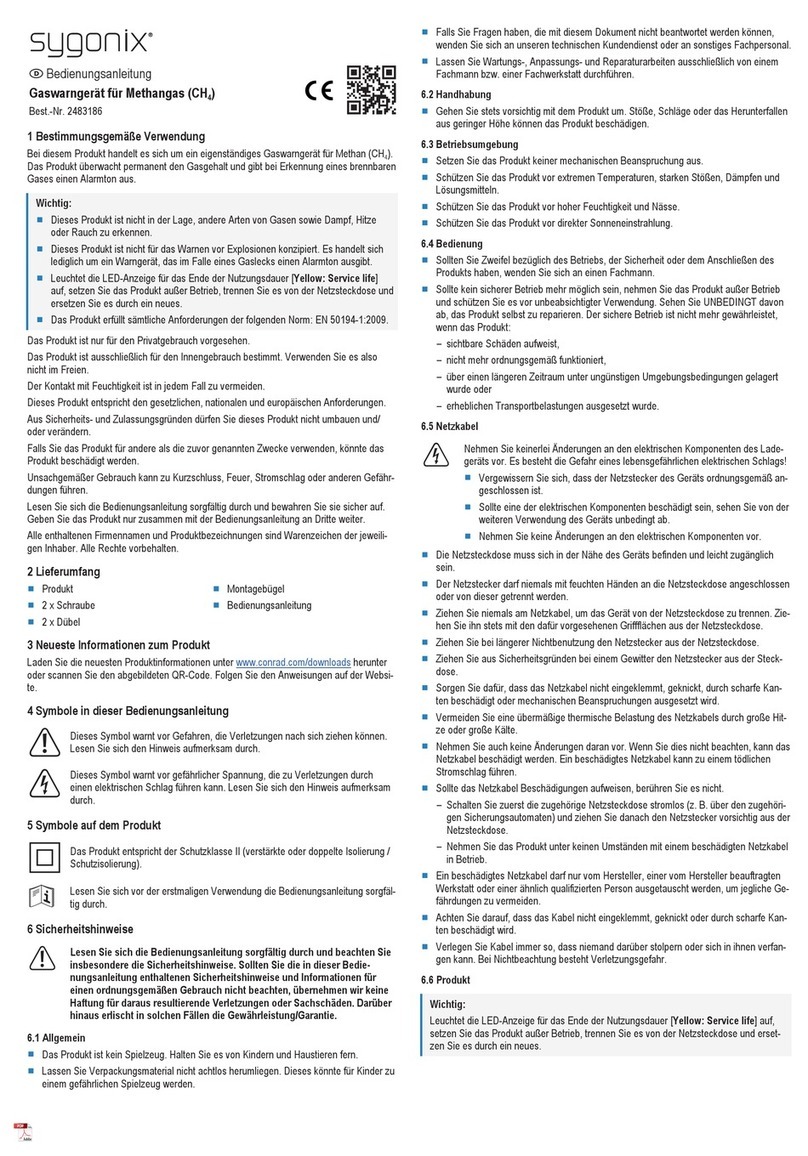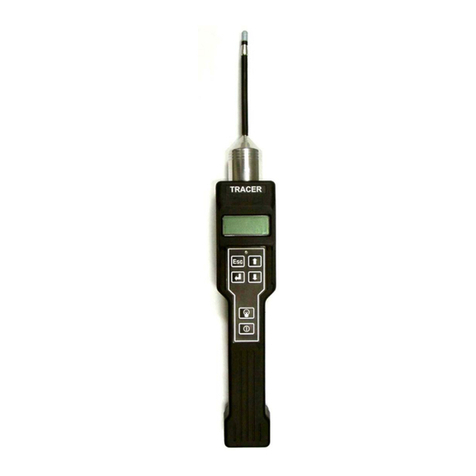
Type
Range
(user
Selectable)
Calib Gas
Used
time (T50)
seconds
Time (T59)
seconds
Default alarm Levels /
Set Points
50 ppm
Electrochemical
Sensors
0.1 ppm 5-35 ppm 25 ppm < 60 ~ 90
-4°C / 24°F 50°C / 122°F 5 ppm 10 ppm
Carbon Monoxide
(CO) 100 ppm 1 ppm 20-50 ppm 50 ppm < 25 ~45
-20°C / -4°F 55°C / 131°F 20 ppm 50 ppm
Carbon Monoxide
(CO) 300 ppm 5 ppm 50-150 ppm 50 ppm < 25 ~45
-20°C / -4°F 55°C / 131°F 100 ppm 150 ppm
Chlorine
10 ppm 0.1 ppm 2-10 ppm 5 ppm < 60 ~50
-20°C / -4°F 55°C / 131°F 2 ppm 5 ppm
Hydrogen 1,000 ppm 10 ppm 100-500 ppm 500 ppm < 90 ~40
-20°C / -4°F 55°C / 131°F 200 ppm 500 ppm
50 ppm 1 ppm 10 -50 ppm 25 ppm < 45 ~120
-20°C / -4°F 55°C / 131°F 200 ppm 500 ppm
Hydrogen Sulfide
(H2S) 25 ppm 0.1 ppm 5-25 ppm 20 ppm < 20 < 50
-40°C / -40°F 65°C / 149°F
(intermittent) 10.0 ppm 15.0 ppm
Hydrogen Sulfide
(H2S) 100 ppm 1 ppm 20-50 ppm 50 ppm < 20 < 50
-40°C / -40°F 65°C / 149°F
(intermittent) 10 ppm 15 ppm
Hydrogen Sulfide
(H2S) 500 ppm 1 ppm 50-150 ppm 50 ppm < 20 < 50
-40°C / -40°F 65°C / 149°F
(intermittent) 50 ppm 100 ppm
Mercaptan 100 ppm 1 ppm 20-50 ppm 50 ppm < 20 < 50
-20°C / -4°F 55°C / 131°F 10 ppm 15 ppm
Nitrogen Dioxide 50 ppm 1 ppm 10-50 ppm 10 ppm < 50 ~ 75
-20°C / -4°F 55°C / 131°F 10 ppm 15 ppm
100 ppm 1 ppm 20-50 ppm 25 ppm < 45 ~ 60
-20°C / -4°F 55°C / 131°F 20 ppm 50 ppm
25 %V/V 0.1 %
Calibrated in fresh air.
Purged with Pure Nitrogen
~ 40
-20°C / -4°F 55°C / 131°F
23.5%V/V
Sulfur Dioxide
100 ppm 1 ppm 20-50 ppm 25 ppm
~50
-20°C / -4°F 65°C / 149°F
5 ppm 10 ppm
5 %
0.1 % 2 – 5 % 2.5 ppm < 15 ~ 40
-40°C / -40°F 75°C / 167°F 2 % 3.5 %
Carbon Dioxide
(CO2) 100% 1 % 10 – 100 % 50 ppm < 15 ~ 40
-40°C / -40°F 75°C / 167°F 20 % 50 %
Used
(T90) seconds
(T50) seconds
%
Set Points
(Hydrocarbons)
100 % LEL
(5% Methane in Air) Catalytic
Bead 1 % 50 % LEL < 45 < 20 ±2 -40°C / -40°F 75°C / 167°F 20 % 40 %
(Methane /
100 % LEL Infrared 1 %
50 % LEL
(methane or
< 45 < 20 ±2 -40°C / -40°F 75°C / 167°F 20 % 40 %
Table 1. Reference Table for Target Gas Range and default parameters
